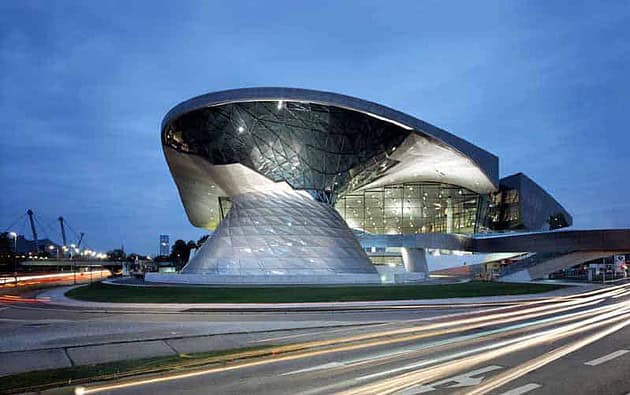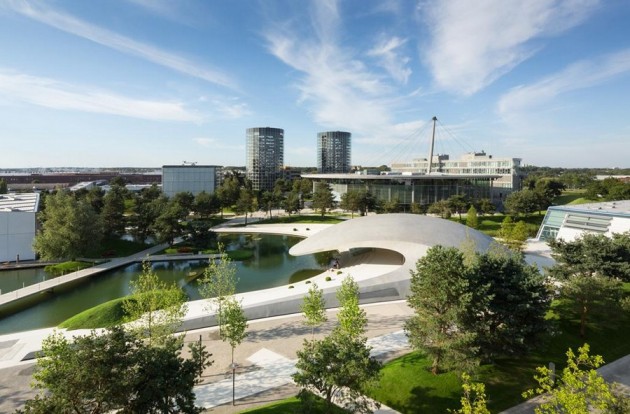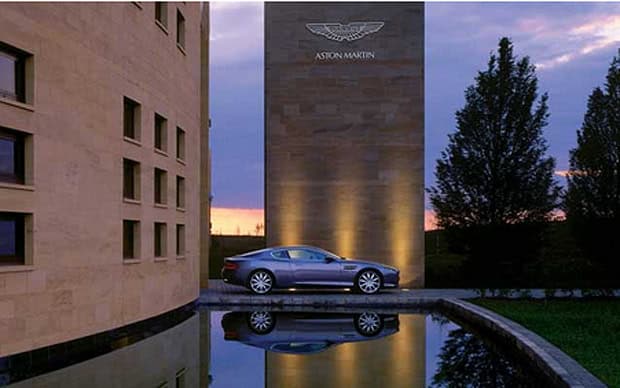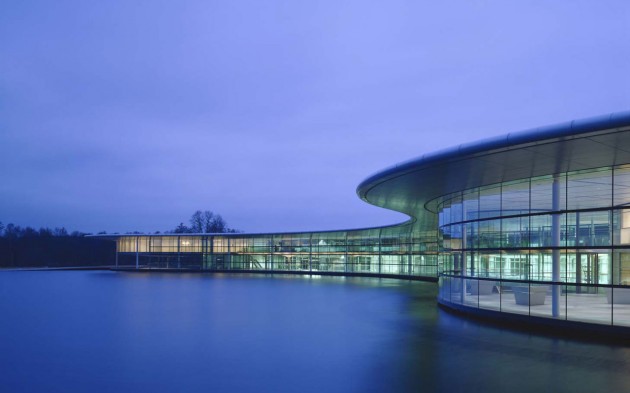Aston Martin, BMW, Ferrari, McLaren, and Mercedes are all hugely revered for their engineering prowess and for their rich histories within the automotive industry. All of these companies have sought to not only represent their design talents through their products but also in the architectural design of their facilities.
McLaren Technology Centre
The McLaren Technology Centre in Woking, Surrey, is a distinctly quieter example of the awesome feats of engineering made by the UK motorsport industry.
Architects Foster + Partners completed work on a Surrey-based Norman Foster-designed production centre for McLaren, the renowned British sports car brand in 2011.
The facility utilises wide spans to offer maximum space for assembly, while the basement is used for storage and machinery, while a mezzanine offers an impressive view of the production line. With wide spans utilised to offer maximum assembly space, and a basement used for both and machinery and storage, while a mezzanine offers a view of the production line
The centre not only acts as a production facility, but also to a certain extent a museum. Historic McLaren vehicles adorning one side of the building next to a large glass window, behind which an artificial lake can be seen, and which also acts a fundamental part of the centre’s cooling system.
Add long white corridors and glass lifts which take visitors to an indoor boulevard, and an undulating curved glass wall to maximise natural and a sweeping roofline to this semi-circular building which still manages to product a minimal carbon footprint.
BMW Innovation Centre
Opening up a new way of co-operation in the product development process, the Project House in the Research and Innovation Centre of the BMW Group organises its space in a special way; but no-one would expect anything less especially when research shows that BMW are arguably the finest example of German automotive engineering there is, when in 2012 they were reported as UKs most reliable manufacturer.
Inaugurated in 1986, the 100 x 100 m BMW Innovation Centre consists of a studio workshop standing in the central atrium, which essentially makes it a building within a building.

Source: www.e-architect.co.uk
The different stages of the project are displayed using real models in a form of rapid prototyping on the four storeys occupied by the project. They can be seen directly from the neighbouring project areas, giving rise to two new ways of communicating, in which every designer is able to switch between the real model and the virtual image on the virtual design screen.
Ferrari Automotive Museum
Opened in 2012, this automotive museum was designed as joint project by Future Systems founder Jan Kaplický and the late Czech architect, and is based in Modena, Italy.
Kaplicky died in 2009, and the building had to be completed by London-based Shiro Studio under the direction of former Future Systems associate Andrea Morgante.

Source: www.e-architect.co.uk
Comprising two buildings in the form of an early nineteenth century former house and workshop of Enzo Ferrari’s father, which has been renovated to house a 40-metre-long gallery, and a second building in the form of an entirely new glass-fronted structure that curves around the older building using a curious, non-linear structure utilising a streamlined yellow aluminium roof to match the colour of the gold Ferrari logo, with sliced incisions added to resemble the air vents on the bonnet of Ferrari models
An exhibition hall sits a basement level, down to which a typically elegant-looking sloping ramp leads visitors to an impressive display of 21 cars which are exhibited on a series of raised platforms.
Aston Martin Headquarters

Source: www.astonmartin.com
Opened in 2003, and comprising an office block, adjoining production facility, in addition to a state-of-the-art design studio, the Gaydon factory in Warwickshire is lush with all of the dynamic architecture and the elegant materials you would expect from the cars themselves, helping to emphasise the sheer quality of the design and finish of the cars produced there.
Indeed, the Aston Martin website considers the building to be ‘the embodiment of Aston Martin and its cars’, and it certainly does reflect the aesthetic beauty, as well as the technical advancements that have made the Aston Martin marque so sought after, combining cutting-edge technology with hand-craftsmanship and traditional techniques.
Aston Martin is the most aspirational brand of all. Ferrari is the most theatrical; underwritten by an awesome F1 history, McLaren is all about clinical engineering and technology; the automotive connoisseur’s choice. BMW is a mass producer so necessarily different but ground breaking because it made premium cars mainstream.
Quite simply, it would be impossible to choose which of the brands are best represented by their architecture because each factory/museum represents different aspects of the awesome feats of engineering with which their respective marques are synonymous.















